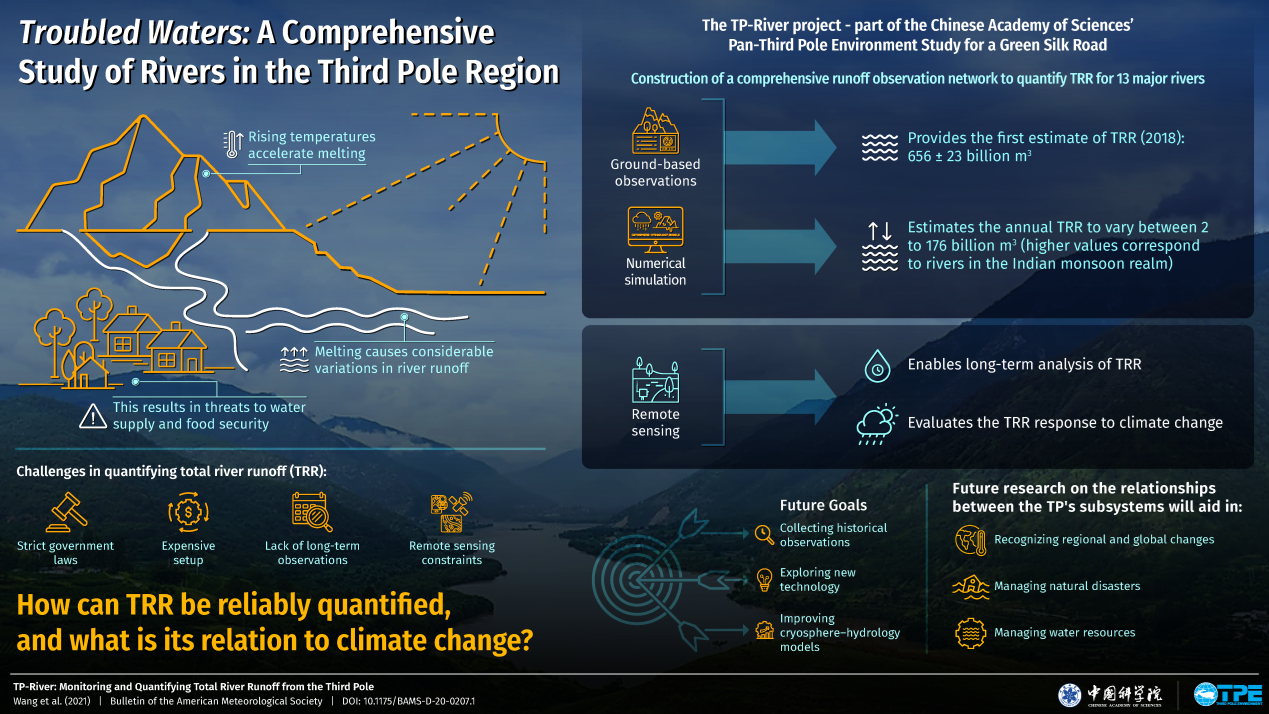The Third Pole centered on the Tibetan Plateau is home to the headwaters of over 10 major Asian rivers. Despite the importance of these rivers, how much water flows out of the mountains of the Third Pole as river runoff is not known by scientists yet.
Now, however, researchers from the Institute of Tibetan Plateau Research (ITP) of the Chinese Academy of Sciences (CAS) have quantified the total river runoff of 13 major rivers in the region.
The study was published in the Bulletin of the American Meteorological Society based on the data from an observational network of “water meters” at mountain outlets in the Third Pole.
Established by Pan-TPE (Pan-Third Pole Environment for a Green Silk Road), a research program supported by CAS, the water meters network generates comprehensive discharge dataset for 13 major Third Pole rivers by integrating both ground-based observations and numerical simulations.
“Monitoring changes in river runoff at mountain outlets in the Third Pole is particularly important, because rivers in this region support millions of people in Asia and are very sensitive to climate change,” said Prof. WANG Lei from ITP, lead author of the study.

A comprehensive study of rivers in the Third Pole region (Image by TPE)
Using data from the network, the scientists made the first-ever estimate of annual total river runoff for the 13 Third Pole rivers. The results, for 2018, peg total runoff at 656 ± 23 billion m3.
The scientists also found that the annual readings of the water meters varied widely among the different rivers, ranging from 2 to 176 billion m3. The higher values mainly corresponded to rivers in the Indian monsoon domain in the southern Third Pole, rather than in the westerly domain in the northern Third Pole.
Readings from these water meters offer valuable information about regional water resources. They also provide information relevant to hazard risk management. This is particularly important in the context of climate change since river runoff has been significantly changed as a result of increasingly rapid snow and glacial melting in the region.
“We also plan to collect and process data for major rivers in the region before 2018 and improve the accuracy of discharge estimates, so that better cryosphere–hydrology models can be built for different river basins across the Third Pole,” said Prof. YAO Tandong, co-author of the study and chief scientist of Pan-TPE.


